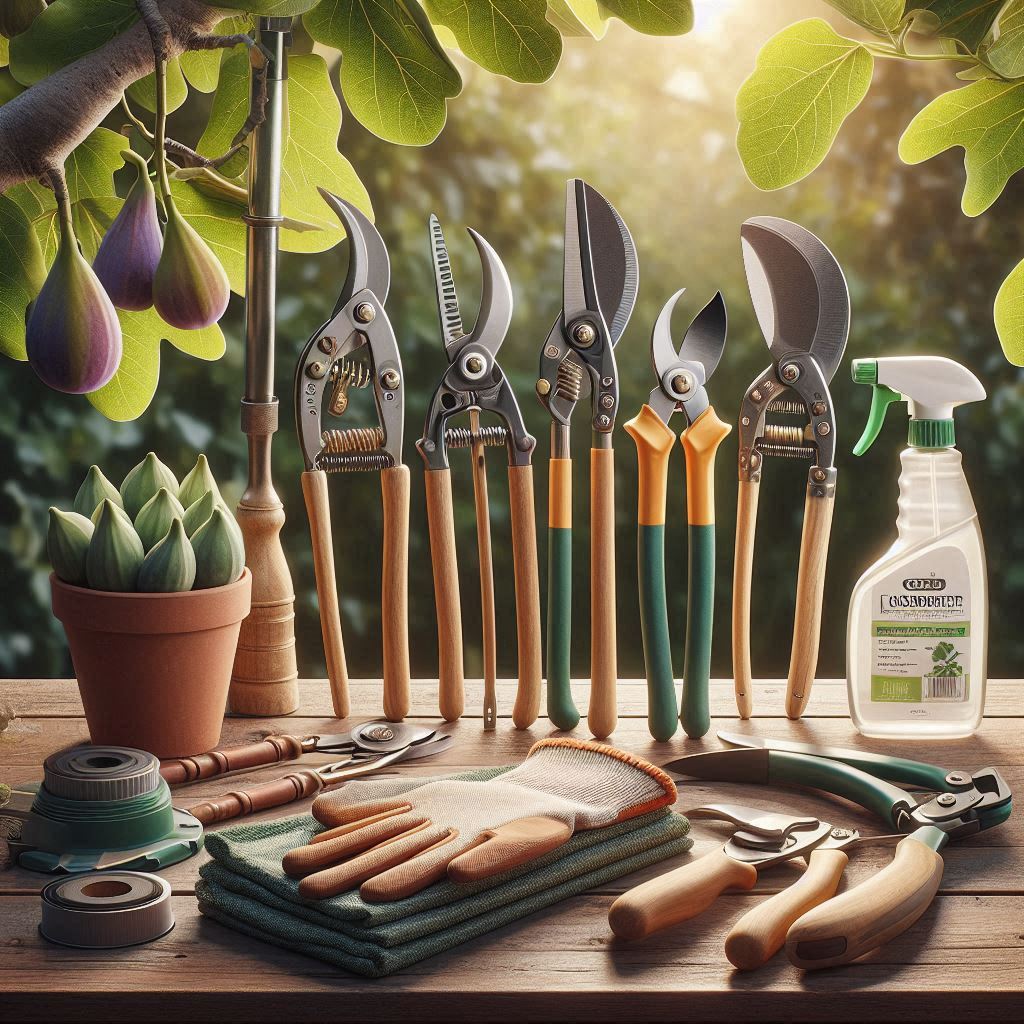A Comprehensive Guide to Pruning Fig Trees in 2025 for Larger, Healthier Harvests

Overview
“A fig tree being pruned? Wouldn’t that cause harm? It’s a common fear, but the key to juicy, plentiful figs is actually knowing how to prune a fig tree 🍈. In fact, fig trees that are properly pruned can produce up to 25% more fruit than those that are left to grow naturally. Knowing how to prune a fig tree is crucial whether you’re caring for a row of fruit trees in your home orchard, a backyard fig tree, or a potted fig on your balcony. With the correct equipment, advice, and timing, you can prune a fig tree step-by-step without any anxiety or guesswork thanks to this guide.
The Importance of Matering How to Prune a Fig Tree

Although it can make your tree appear more tidier, knowing how to prune a fig tree is more than just aesthetics. The advantages are much more profound:
- It improves sunlight exposure and air circulation, which helps ward off fig tree diseases like mildew and rust.
- It encourages a robust branch structure to sustain limbs that bear fruit.
- Eliminating deadwood and suckers aids in avoiding pest infestation.
- Pruning directs energy toward fewer, healthier branches, increasing fruit size and yield.
- Keeping the tree at a manageable height makes harvesting figs easier.
Depending on your location and the maturity of the tree, these advantages apply to both winter and summer fig tree pruning.
When to Trim a Fig Tree

When to prune a fig tree is one of the most frequently asked questions. Pruning fig trees is best done in late winter or early spring, when the trees are dormant and before new growth begins. As a result, the tree experiences less stress and can concentrate its energy on growing again. Light summer pruning is also feasible in warmer climates, particularly to thin out dense foliage for better airflow or to reduce excessive height. During this busy growing season, take care not to prune fig trees too severely.
Indications that your tree is ready:
- There has been a leaf drop.
- No buds are growing.
- Water sprouts or suckers have emerged.
- You see diseased or dead branches.
Climate zones are important. To prevent frost damage to newly cut areas, wait until the risk of a severe cold has passed.
Equipment Required for Pruning Fig Trees

Having the proper equipment guarantees clean cuts and aids in illness prevention:
- For new growth and small branches, use bypass pruners. They cut cleanly and precisely, making them perfect for removing fig tree suckers.
- Lops are crucial for controlling and shaping the height of fig trees and offer superior leverage for thicker limbs.
- When pruning mature fig trees, it’s crucial to use rubbing alcohol to disinfect the tools in between cuts to prevent the spread of disease.
- To prevent fig sap from irritating your skin, put on protective gloves.
- For efficient pruning, keep your tools rust-free and sharp. Branch crushing and infection risk are increased by dull tools.
Purchasing the best pruning shears for fig trees will result in longer-lasting, healthier cuts.
The Step-by-Step Guide on How to Prune a Fig Tree

Let’s get down to business now. Here’s a step-by-step guide to fig tree pruning:
Step 1: Determine Which Branches Are Dead, Damaged, or Ill
To get rid of branches that are dry, split, infested with pests, or blackened, use bypass pruners. These branches deplete the tree’s energy and frequently harbor disease. Cut around ½ inch above a junction or healthy bud.
Step 2: Reduce Congested Limbs
Overcrowded branches impede airflow and prevent sunlight exposure. To cut off branches that face inward or cross, use pruners for smaller limbs and loppers for larger ones. This enhances the thinning of the fig tree canopy and lets light into the growing figs.
Step 3: Reduce Basal Growth and Suckers
Suckers are shoots from the base, and water sprouts are thin vertical shoots that divert energy. With hand pruners, trim them off near the base. This promotes improved fig tree productivity and overall maintenance.
Step 4: Form the Canopy to Allow for Sunlight Infiltration
You want an open structure that resembles a vase. To guide shape and cut off any vertical shoots growing inside the canopy, use pruning shears and loppers. This promotes the development of the fig tree fruiting cycle and facilitates airflow.
Step 5: Reduce Tree Height to Make Harvesting Easier
If your fig tree is too tall, trim its tall leaders to a more manageable height with heavy-duty loppers. Maintaining your tree between 10 and 12 feet increases fig tree yield and makes future pruning easier.
(Tip: To visually support these steps, include a pruning diagram in your digital content.)
How to Prune a Fig Tree: Young vs. Mature
Regarding Young Fig Trees:
To create a balanced framework in the first year, cut off all but three or four strong shoots. This initial fig tree training creates a productive shape. Every year, trim back to buds that face outward and thin out overcrowded growth.
For Fig Trees That Are Mature:
How to prune a fig tree for maintenance is essential. Pay attention to shaping, sucker control, and deadwood removal. Unless you are reviving a neglected tree, you should avoid hard pruning. Stress and fewer fruits can result from overpruning.
Always think about how the tree will react; stress, poor fruiting, or delayed growth could indicate that you’ve gone too far. Discover the rhythm of your tree.
Typical Errors on How to Prune a Fig Tree to Avoid

When learning how to prune a fig tree, steer clear of these typical mistakes:
- Excessive pruning stunts growth by removing too much canopy.
- Cutting too near the bud or trunk increases the risk of infection.
- Disease spreads when limbs infected by pests are left in place.
- Damage and ragged cuts result from using dull tools.
To encourage appropriate healing and growth, make clean, intentional cuts using well-maintained instruments.
What to Do After Pruning: Aftercare
After pruning, your work is not done:
- To lessen stress and encourage regrowth, give the tree a lot of water.
- After two to three weeks, fertilize the new shoots with a balanced fig tree fertilizer.
- Particularly during the first week, keep an eye out for symptoms of stress, such as yellowing leaves.
- Cuttings don’t need to be sealed unless pests are a known issue, in which case a natural tree wound sealer might be useful.
- If done properly, expect early fig growth and new leaf buds in a few weeks.
This fig tree aftercare will reward your efforts with increased health and productivity.
Frequently Asked Questions on How to Prune a Fig Tree
- Is it possible to trim a fig tree during the summer?
- Yes, you can control height and improve airflow by lightly pruning in the summer, but don’t make significant structural changes.
- How far back can a fig tree be cut?
- During the dormant season, you can prune fig trees by as much as ⅓. In winter, more aggressive cuts are acceptable for rejuvenating old fig trees.
- Do potted fig trees always need to be pruned?
- Indeed. Potted fig trees remain compact and fruitful with regular pruning. Apply the same strategies, paying particular attention to size control.
- What if my fig tree never gets any pruning?
- An unpruned fig tree may become overly tall, yield fewer figs, and be more vulnerable to pest and disease infestation.
In conclusion
Pruning a fig tree doesn’t have to be difficult. You can help your tree grow stronger, stay healthier, and produce more delicious figs than ever before with the right equipment, the right time, and methodical techniques. Consistent fig tree care, including careful pruning, will pay off season after season, regardless of your level of gardening experience.
So take out your pruning tools, pick a clear day, and start influencing the future of your fig tree, branch by branch. 🍃
Are you prepared to trim? Save this page to your bookmarks and forward it to other fig enthusiasts!
Also want to learn how to prune witeria? See more.
